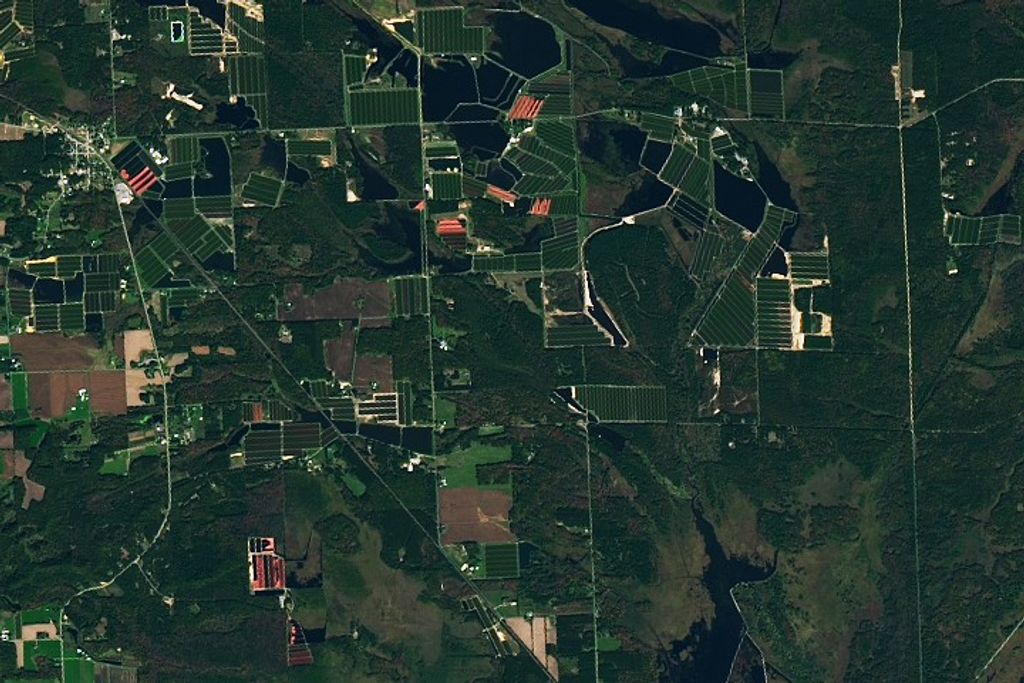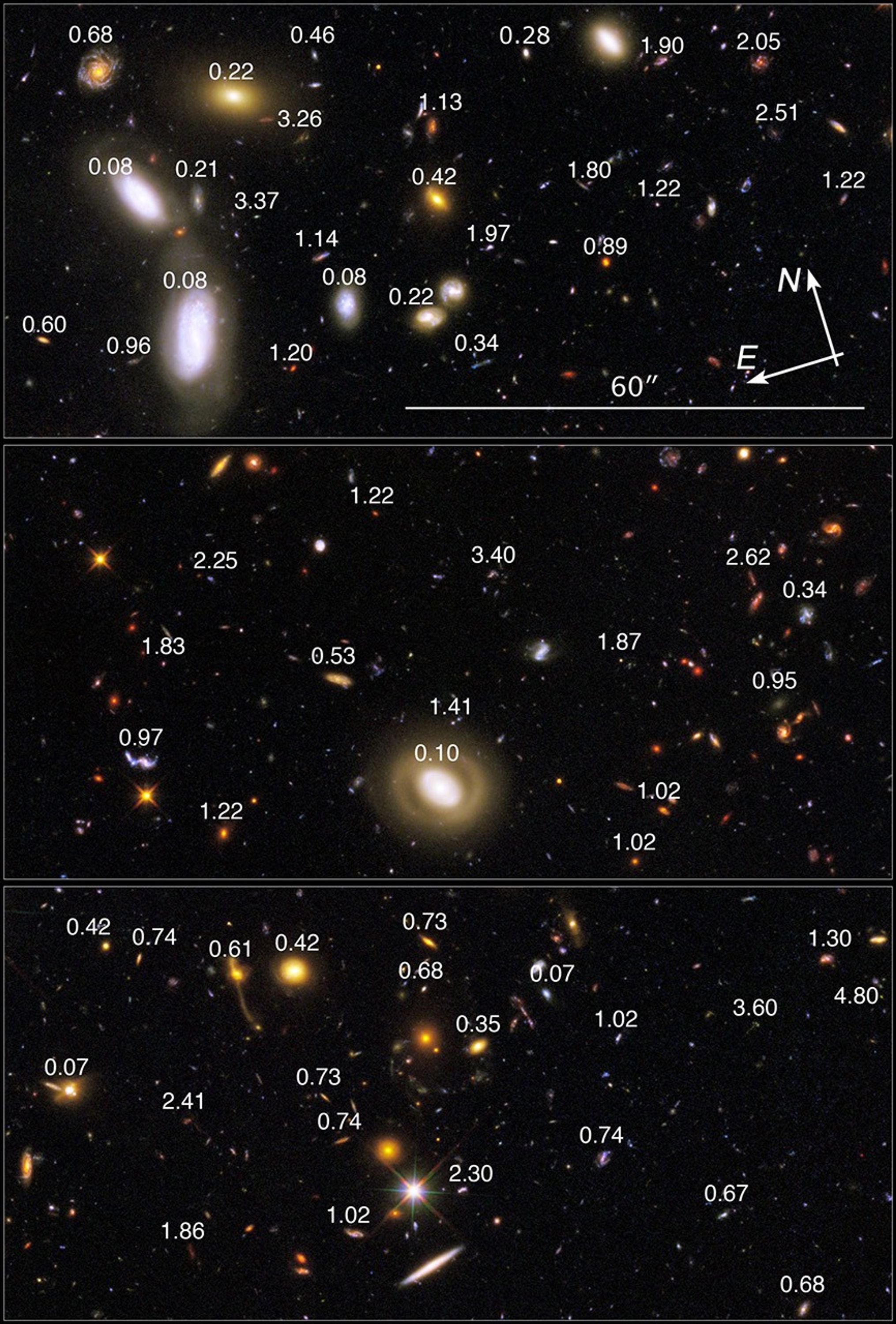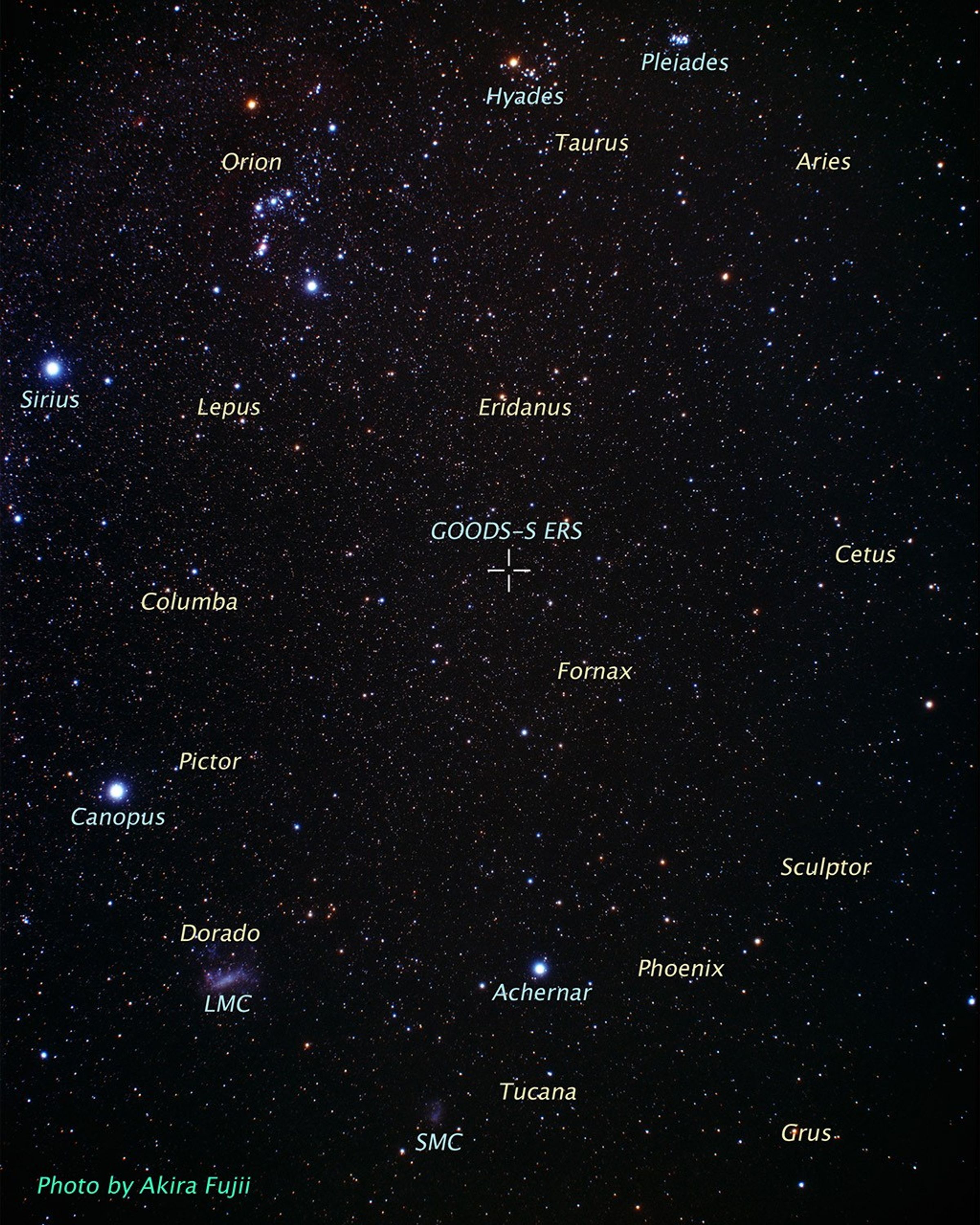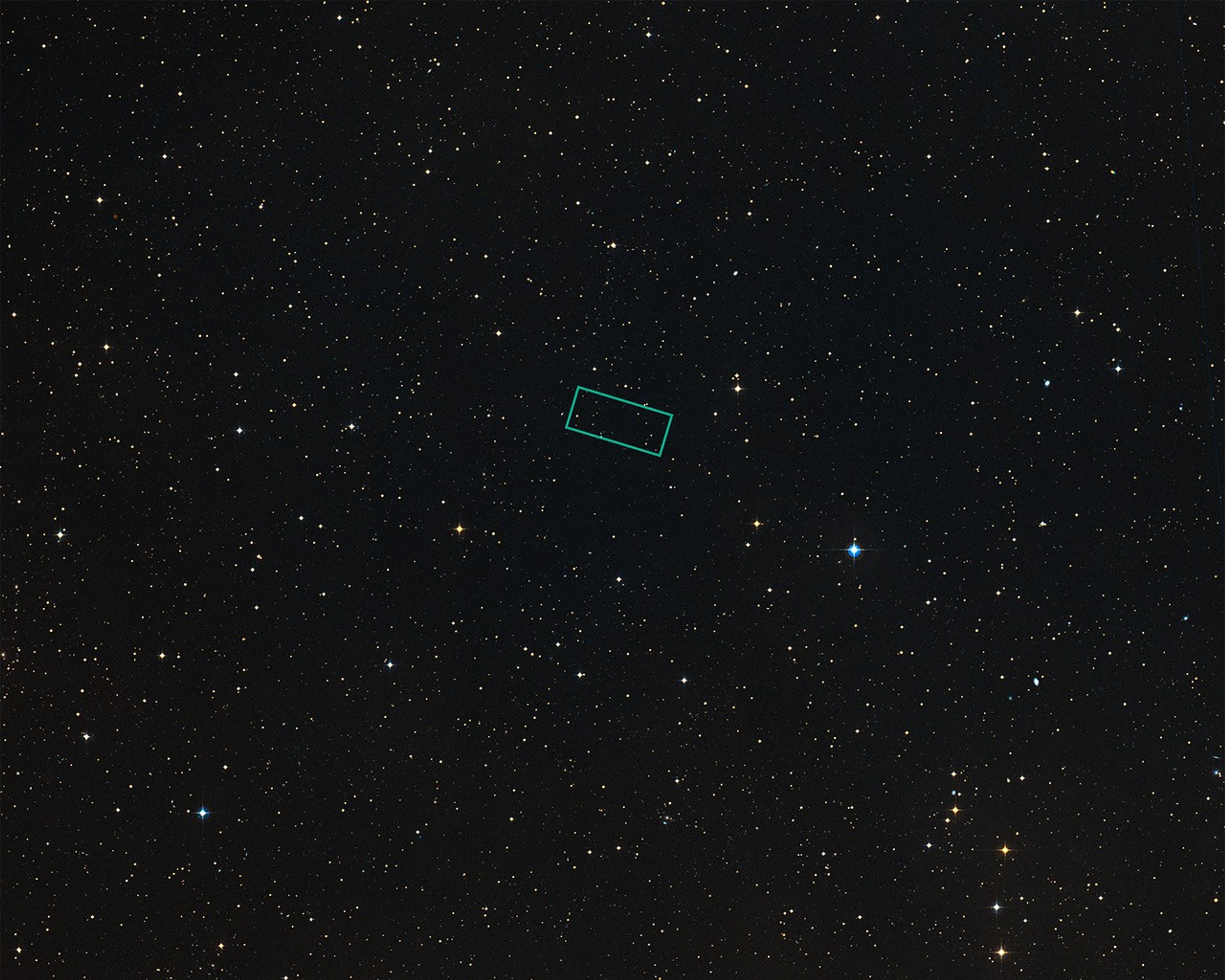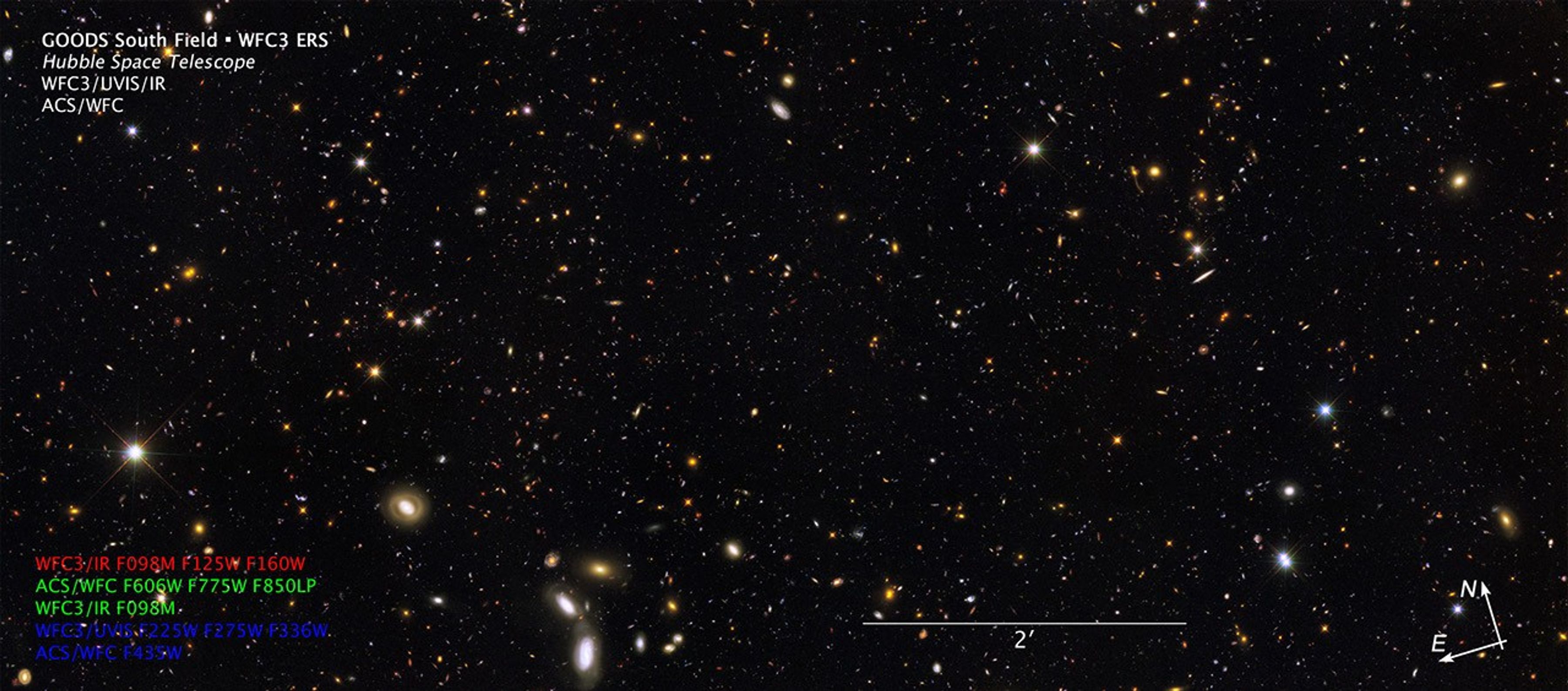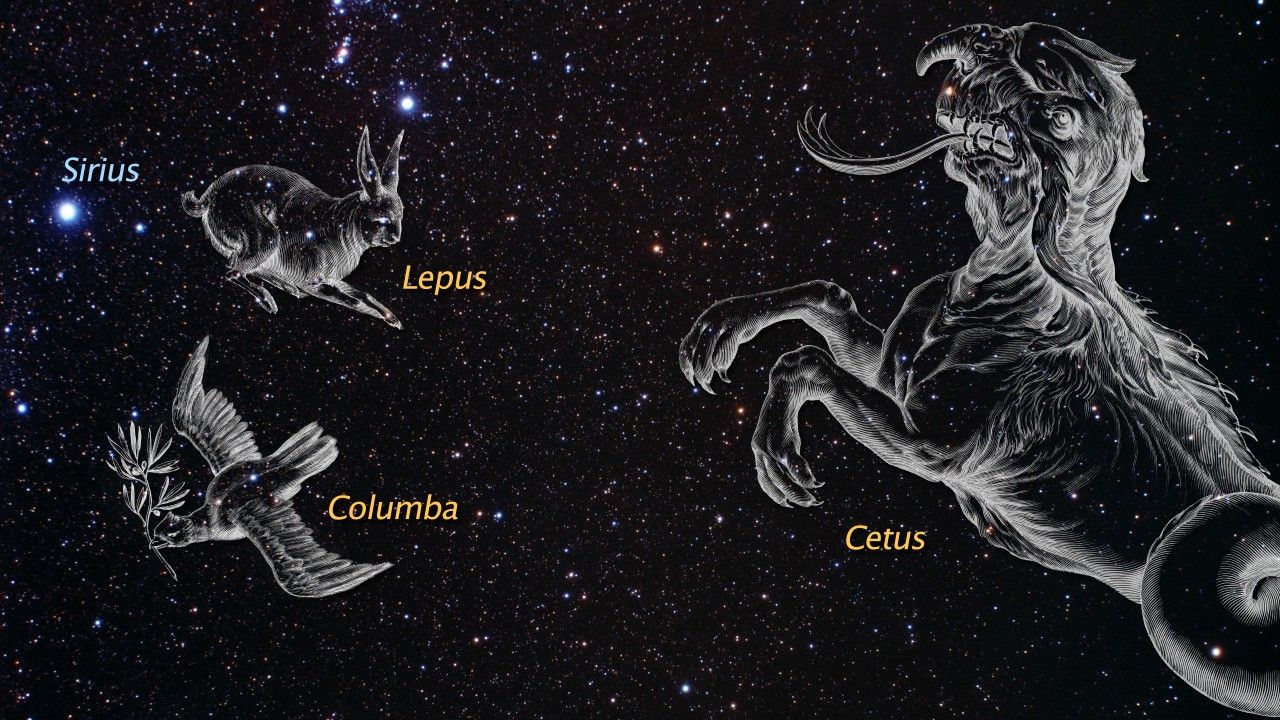1 min read
GOODS South WFC3 ERS Details 1

About the Object
- R.A. PositionR.A. PositionRight ascension – analogous to longitude – is one component of an object's position.03h 32m 40.23s
- Dec. PositionDec. PositionDeclination – analogous to latitude – is one component of an object's position.-27° 43' 9.86"
- ConstellationConstellationOne of 88 recognized regions of the celestial sphere in which the object appears.Fornax
About the Data
- Data DescriptionData DescriptionProposal: A description of the observations, their scientific justification, and the links to the data available in the science archive.
Science Team: The astronomers who planned the observations and analyzed the data. "PI" refers to the Principal Investigator. - InstrumentInstrumentThe science instrument used to produce the data.HST>ACS/WFC, HST>WFC3/UVIS, and HST>WFC3/IR
- Exposure DatesExposure DatesThe date(s) that the telescope made its observations and the total exposure time.Sept. 2002 - Dec. 2004, Exposure Time: 96 orbits (ACS) and Sept. 6, 2009 - Oct. 11, 2009, Exposure Time: 104 orbits (WFC3)
- FiltersFiltersThe camera filters that were used in the science observations.WFC3/IR: F098M, F125W, and F160W ACS/WFC: F435W, F606W, F775W, and F850LP WFC3/UVIS: F225W, F275W, and F336W
- Object NameObject NameA name or catalog number that astronomers use to identify an astronomical object.GOODS South Field WFC3/ERS Detail
- Object DescriptionObject DescriptionThe type of astronomical object.Cosmological Survey
- Release DateJanuary 5, 2010
- Science ReleaseGalaxy History Revealed in This Colorful Hubble View
- CreditNASA, ESA, R. Windhorst, S. Cohen, M. Mechtley, and M. Rutkowski (Arizona State University, Tempe), R. O'Connell (University of Virginia), P. McCarthy (Carnegie Observatories), N. Hathi (University of California, Riverside), R. Ryan (University of California, Davis), H. Yan (Ohio State University), and A. Koekemoer (Space Telescope Science Institute)

The image is a composite of separate exposures made by the WFC3 and ACS instruments on the Hubble Space Telescope. In total, 10 filters were used to sample a very wide wavelength range. The color results from assigning different hues (colors) to combinations of the monochromatic images. In this case, the assigned colors are: Red: WFC3/IR F125W + F160W Green: ACS/WFC F606W + F775W + F850LP + WFC3/IR F098M Blue: WFC3/UVIS F225W + F275W + F336W + ACS/WFC F435W
Related Images & Videos
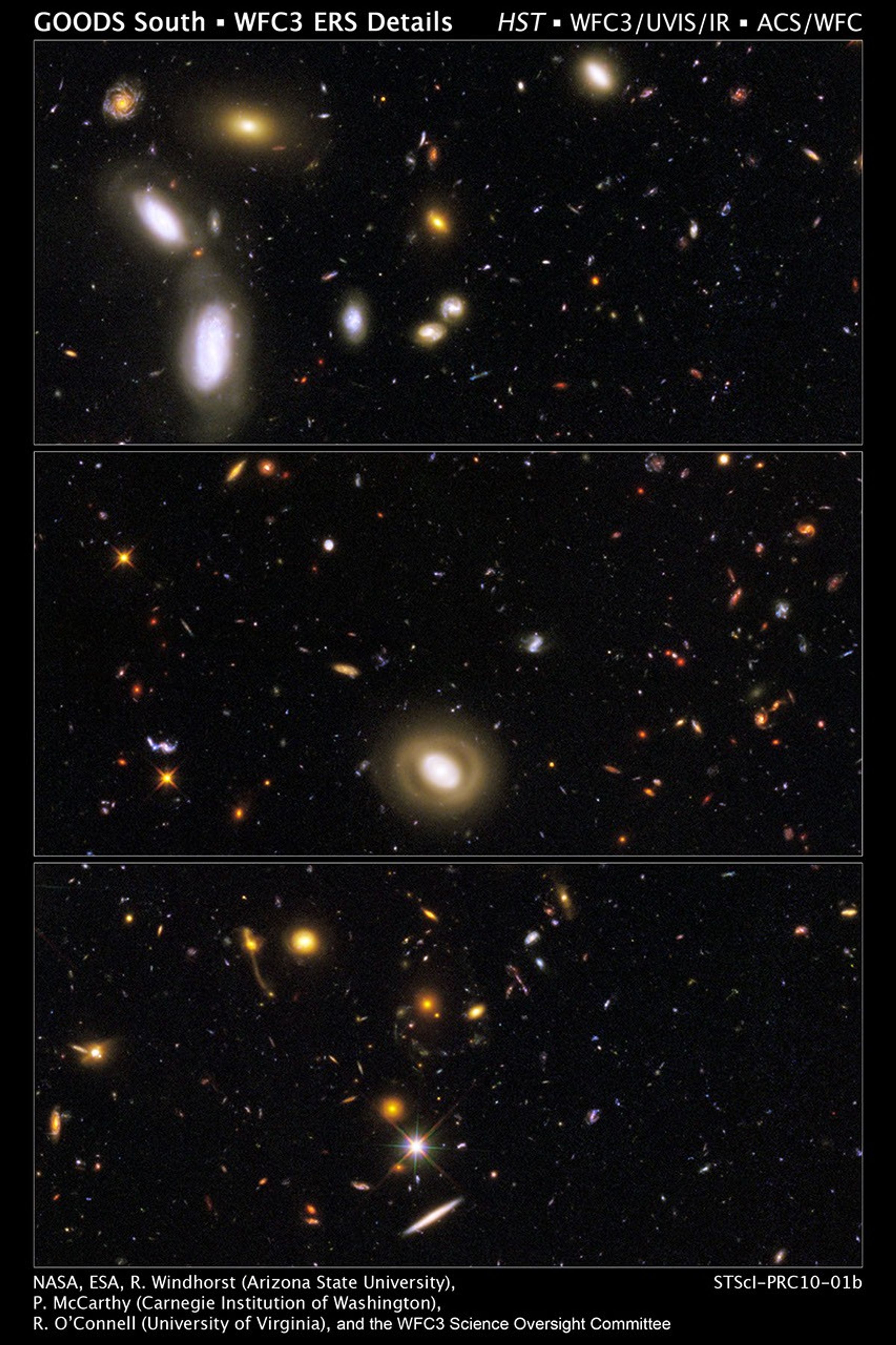
Close-Up Views of the GOODS Field
These three close-up views show the rich variety of galaxies that appear in the new panoramic, full-color image of the Great Observatories Origins Deep Survey (GOODS) field, taken by NASA's Hubble Space Telescope. The full field reveals 7,500 galaxies in various stages of...
Share
Details
Claire Andreoli
NASA’s Goddard Space Flight Center
Greenbelt, Maryland
claire.andreoli@nasa.gov









